El Banquete. El plan de los naufragos

El Banquete. El plan de los naufragos, La Fenice Gallery, Venezia
Dal 26 July 2014 al 24 August 2014
Venezia
Luogo: La Fenice Gallery
Indirizzo: Corte del Tagiapiera S. Marco 1948
Orari: da giovedì a domenica 14-18 o su appuntamento
Curatori: Ana María Area Martínez
Telefono per informazioni: +39 041 5232333
E-Mail info: info@lafenicegallery.com
Sito ufficiale: http://www.lafenicegallery.com
Partendo da oggetti semplici e familiari, il collettivo ‘El Banquete’, composto da Alejandro Cinque, Raquel G. Ibáñez, Antonio Torres e Marta van Tartwijk, riflette sulle dinamiche del potere politico contemporaneo delineando metodologie retoriche il cui fine è quello di palesarsi in azioni dirette.
Per la loro prima esposizione in Italia, lo spazio de La Fenice Gallery viene ridefinito attraverso un’installazione site specific che, sfruttando l’utilizzo di un oggetto comune come la bottiglia di vetro, conduce ad una considerazione sui mezzi di comunicazione clandestini come una possibile resistenza verso l’eccessiva visibilità e il costante controllo ai quali siamo esposti ogni giorno. La visibilità viene qui intesa come una trappola, come qualcosa di vincolante, come supporto di sorveglianza delle autorità del sistema. Allo stesso modo la non visibilità, il disperdersi, diviene un’efficace mezzo di manifestazione della clandestinità.
El plan de los náufragos mira a promuovere l’emancipazione del cittadino attraverso canali di comunicazione alternativi non controllati e che permettono la possibilità di attuare una resistenza attiva. Così, la bottiglia diventa sia mezzo per comunicare una frase ribelle estratta dalla pubblicazione filosofica francese Tiqqun stampata su uno straccio e sia detonatore di proteste politico-sociali. Riallacciandosi da un lato alla figura del naufrago e al suo gesto romantico e disperato di gettare una bottiglia in mare con un messaggio al suo interno, e dall’altro a quella dell’attivista politico che lancia le bottiglie come cocktail Molotov per attentare al sistema durante le guerriglie urbane.
In un primo caso l’atto di resistenza alla solitudine si serve della deriva e della sua fragilità galleggiante, nel secondo l’attivismo si imposta come un atto di resistenza politica, in cui il cittadino designa il suo personale mezzo di comunicazione clandestino per lanciare un messaggio di protesta.
Proporre questa azione in una città come Venezia, solleva inevitabilmente certe problematiche che tornano a riaprire la tensione tra l’utopia e la distopia. Nell’isola deserta la figura del naufrago, come un prigioniero all’interno di una utopia immaginaria, si riflette nell’abitante della città, dove la gentrificazione estrema ed il turismo stesso, fanno sì che alla fine, la realtà non corrisponda all’immagine della cartolina.
Il progetto propone un appello all’azione partendo da un ideale di forza di resistenza che cerca di risvegliare l’entità politica insita nel cittadino a renderlo così consapevole della sua presenza e del suo potere.
Per la loro prima esposizione in Italia, lo spazio de La Fenice Gallery viene ridefinito attraverso un’installazione site specific che, sfruttando l’utilizzo di un oggetto comune come la bottiglia di vetro, conduce ad una considerazione sui mezzi di comunicazione clandestini come una possibile resistenza verso l’eccessiva visibilità e il costante controllo ai quali siamo esposti ogni giorno. La visibilità viene qui intesa come una trappola, come qualcosa di vincolante, come supporto di sorveglianza delle autorità del sistema. Allo stesso modo la non visibilità, il disperdersi, diviene un’efficace mezzo di manifestazione della clandestinità.
El plan de los náufragos mira a promuovere l’emancipazione del cittadino attraverso canali di comunicazione alternativi non controllati e che permettono la possibilità di attuare una resistenza attiva. Così, la bottiglia diventa sia mezzo per comunicare una frase ribelle estratta dalla pubblicazione filosofica francese Tiqqun stampata su uno straccio e sia detonatore di proteste politico-sociali. Riallacciandosi da un lato alla figura del naufrago e al suo gesto romantico e disperato di gettare una bottiglia in mare con un messaggio al suo interno, e dall’altro a quella dell’attivista politico che lancia le bottiglie come cocktail Molotov per attentare al sistema durante le guerriglie urbane.
In un primo caso l’atto di resistenza alla solitudine si serve della deriva e della sua fragilità galleggiante, nel secondo l’attivismo si imposta come un atto di resistenza politica, in cui il cittadino designa il suo personale mezzo di comunicazione clandestino per lanciare un messaggio di protesta.
Proporre questa azione in una città come Venezia, solleva inevitabilmente certe problematiche che tornano a riaprire la tensione tra l’utopia e la distopia. Nell’isola deserta la figura del naufrago, come un prigioniero all’interno di una utopia immaginaria, si riflette nell’abitante della città, dove la gentrificazione estrema ed il turismo stesso, fanno sì che alla fine, la realtà non corrisponda all’immagine della cartolina.
Il progetto propone un appello all’azione partendo da un ideale di forza di resistenza che cerca di risvegliare l’entità politica insita nel cittadino a renderlo così consapevole della sua presenza e del suo potere.
SCARICA IL COMUNICATO IN PDF
COMMENTI

-
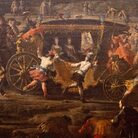 Dal 20 December 2025 al 20 April 2026
Caserta | Reggia di Caserta
Dal 20 December 2025 al 20 April 2026
Caserta | Reggia di Caserta
Regine: trame di cultura e diplomazia tra Napoli e l’Europa
-
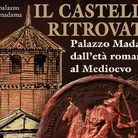 Dal 19 December 2025 al 23 March 2026
Torino | Palazzo Madama - Museo Civico d’Arte Antica
Dal 19 December 2025 al 23 March 2026
Torino | Palazzo Madama - Museo Civico d’Arte Antica
Il castello ritrovato. Palazzo Madama dall’età romana al medioevo
-
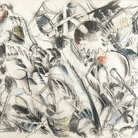 Dal 17 December 2025 al 19 January 2026
Roma | Palazzo della Cancelleria
Dal 17 December 2025 al 19 January 2026
Roma | Palazzo della Cancelleria
De Humana Mensura di Linda Karshan
-
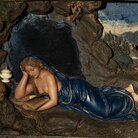 Dal 18 December 2025 al 12 April 2026
Firenze | Gallerie degli Uffizi
Dal 18 December 2025 al 12 April 2026
Firenze | Gallerie degli Uffizi
Cera una volta. Sculture dalle collezioni medicee
-
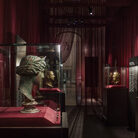 Dal 11 December 2025 al 9 April 2026
Firenze | Museo Archeologico Nazionale di Firenze
Dal 11 December 2025 al 9 April 2026
Firenze | Museo Archeologico Nazionale di Firenze
Icone di Potere e Bellezza
-
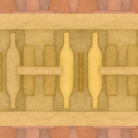 Dal 11 December 2025 al 11 January 2026
Roma | Palazzo Esposizioni Roma
Dal 11 December 2025 al 11 January 2026
Roma | Palazzo Esposizioni Roma
Giorgio Morandi nella Collezione Eni. Un viaggio attraverso la storia culturale del cane a sei zampe e l’eredità di Enrico Mattei


